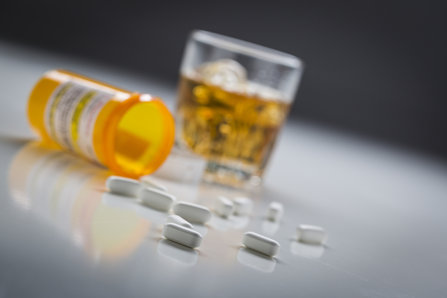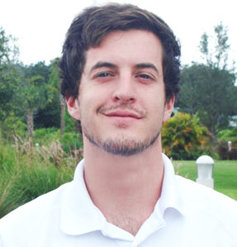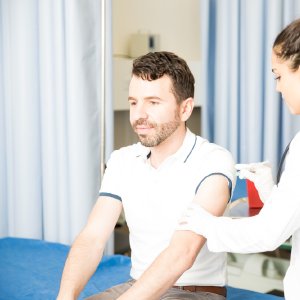Magic Bullet to Addiction?
For the last few decades, the field of drug rehabilitation has gone through many changes. One expert after another has taken center stage, making claims about a breakthrough in solving addiction. The latest breakthrough to take center stage is the arrival of MAT—medication-assisted treatment. But is it really an answer to addiction? And if it is not, then why would it generate the kind of support it currently enjoys?
We’ll take a look at each of these points, starting with a quick look at what MAT is.

According to the Substance Abuse and Mental Health Services Administration (SAMHSA), MAT is the use of medications in combination with counseling and behavioral therapies for the treatment of substance use disorders.
What Drugs Are Used for MAT?
The type of MAT program mostly in the headlines these days is the treatment of opioid addiction with drugs like methadone or the newer drug buprenorphine which is most often sold in formulas called Suboxone and Subutex. These drugs are opioids that replace the drugs a person was taking, quelling their cravings and keeping them from going into withdrawal – because they are still taking—and addicted to—a drug much like the one they were addicted to before treatment.

There have only been a few other drugs approved for use in MAT programs and they are all used in the treatment of alcoholism. The list includes:
Antabuse (disulfiram): A drug that interferes with the body’s ability to break down alcohol properly. If a person drinks while taking this drug, he can expect to experience flushing, nausea, and palpitations.
Naltrexone: This is the same drug that brings a person back from an opioid overdose. For an alcoholic, it is supposed to reduce the pleasure a person feels from drinking so they stop before they get drunk. Its brand name is Vivitrol.
Campral (acamprosate): This drug is said to offer relief the symptoms or restlessness and anxiety a person experiences when they stop drinking.
There are no medications approved for treatment of addiction to marijuana, cocaine, methamphatamine, synthetics, hallucinogens or other drugs.
Is There a Problem with MAT?
Some people classify MAT not as treatment, but as harm reduction (the effort to minimize the harm one does to oneself while continuing to use drugs). However one thinks of MAT, all these treatment protocols make one basic assumption: An addicted person is very unlikely to recover from addiction to the point that he (or she) can enjoy a sober life without needing to rely on a pharmaceutical crutch. But what if that assumption is false?
Does “Success” Equal “Compliance”?
“Compliance” is the term used to describe a patient following his treatment program and not dropping out. If they adhere to their treatment protocol, whatever it is, that treatment program is “successful” in some people’s books. Please note: In this context, being successful does not mean that the treatment eliminates the condition being treated.
Both methadone and buprenorphine/Suboxone may be given to patients for years. These patients are “in compliance,” as long as they take their medication every day. That person is then considered a success story because he is not out hustling heroin, fentanyl or morphine. Or at least, not as often. It’s well known in this field that some patients on these treatment programs continue to abuse opioids or other drugs.
Who Benefits the Most From MAT?
Who benefits most? The patients? Or maybe the pharmaceutical companies?
An understanding of the phenomenal profits being made by pharmaceutical companies involved in MAT is essential to understanding why MAT is being promoted so avidly by so many people.
Reckitt Benckiser holds the rights to market and distribute buprenorphine in the formulas Suboxone and Subutex. In 2016, thirty-five states sued Reckitt Benckiser for profiteering from the sale of this drug at artificially high prices.
Methadone comes in many forms, including injectable methadone, pills and the red liquid so familiar to those in methadone programs. Mallinckrodt Pharmaceuticals and Roxane Laboratories profit from the widespread distribution of methadone to those trying to recover from addiction. While many insurance companies are paying for methadone to be provided to patients trying to recover from addiction, the federal government alone is shelling out $920 million a year for this drug.
It’s estimated that more than two million Americans are receiving some kind of MAT which gives you an idea of the number of patients taking these drugs.
Teva Pharmaceuticals, an Israeli company, makes disulfiram. Alkermes makes Vivitrol, the form of naloxone used in alcoholism treatment. About one-quarter of the company's $628 million in sales are from this one drug.
The conclusion one could come to is that there are hundreds of millions of dollars to be made from these drugs. That is plenty of money to hire pharmaceutical reps to distribute these drugs and lobbyists in Washington to promote their use.
Are These Drugs the Best Solution?
But are these drugs really “Wonder Drugs” that offer a productive, sober, healthy, enjoyable life during treatment? Some people who have experienced this treatment say “No.”
One of our graduates from Narconon Suncoast in Florida, said that more drugs were not the solution to his problem. He wrote:

“Suboxone didn’t handle my addiction AT ALL. It just helped me trade one drug for another and kept me from getting sick. In actuality, it did nothing but perpetuate and further my addiction. I became addicted to BOTH heroin and Suboxone.
“More drugs aren’t the solution to a drug problem. To me, that is painfully obvious. I failed miserably to get sober many, many times. My family and I had given up all hope that I would ever ‘get it.’
“What finally worked for me was going to a treatment center that helped get my entire body clean and off of all drugs, which ACTUALLY helped my cravings. It then helped me to figure out why drugs became a solution to all my life’s problems. My advice to anyone out there struggling to get sober is that using Suboxone is NOT AN ANSWER! Stop taking it and get off it now! Get to a real treatment center that’s going to handle your cravings and handle your underlying issues.”
When a family is seeking a recovery program for someone they care about, it’s best to get educated on the pros and cons of each kind of treatment or recovery program. MAT is not the only answer to addiction to opioids or alcohol. There are many programs that encourage the achievement of complete freedom from drugs. We are proud to be one of them.


 ®
®